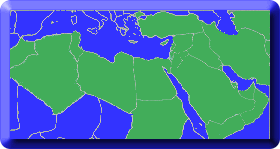
Topics in Middle Eastern and North African Economies
Document Type
Article
Publication Date
9-1-2014
Journal Title
Topics in Middle Eastern and North African Economies
Volume
16
Publisher
Middle East Economic Association and Loyola University Chicago
Abstract
After the 2011 revolution, Egypt’s central Bank (CBE) changed its stance from a managed floating exchange rate regime to stabilizing the EGP, even though the market kept pushing for a devaluation to adjust Egypt’s trade competitiveness given the deteriorating state of the economy in general and the external balance specifically. This paper tries to judge the behavior of the Central Bank by looking at the possible effects of a real devaluation on Egypt’s trade competitiveness. Using an ARDL model, we study both the 2003 devaluation and the 2013 partial devaluation, and conclude that the impact of a real devaluation on Egypt’s trade balance is statistically insignificant. We further show that a J-curve effect is not present given the stationary characteristic of the real exchange rate. In effect, we do not find any positive incentives regarding trade competitiveness, for the Central Bank to consider devaluation as a possible remedy to improving Egypt’s external balance of payments.
Identifier
2334-282X
ISSN
2334-282X
Recommended Citation
Amer, Ziad Waleed, "CBE and FX Devaluation: Bitter Enemies or is it Just a Matter of Time? Analyzing the Impact of an EGP Devaluation on Egypt’s Trade Balance". Topics in Middle Eastern and North African Economies, electronic journal, 16, Middle East Economic Association and Loyola University Chicago, 2014, http://www.luc.edu/orgs/meea/
Creative Commons License

This work is licensed under a Creative Commons Attribution-Noncommercial-No Derivative Works 3.0 License.
Copyright Statement
© 2014 the authors



Comments
Presentation of the articles in the Topics in Middle Eastern and North African Economies was made possible by a limited license granted to Loyola University Chicago and Middle East Economics Association from the authors who have retained all copyrights in the articles. http://www.luc.edu/orgs/meea/volume16/meea16.htm